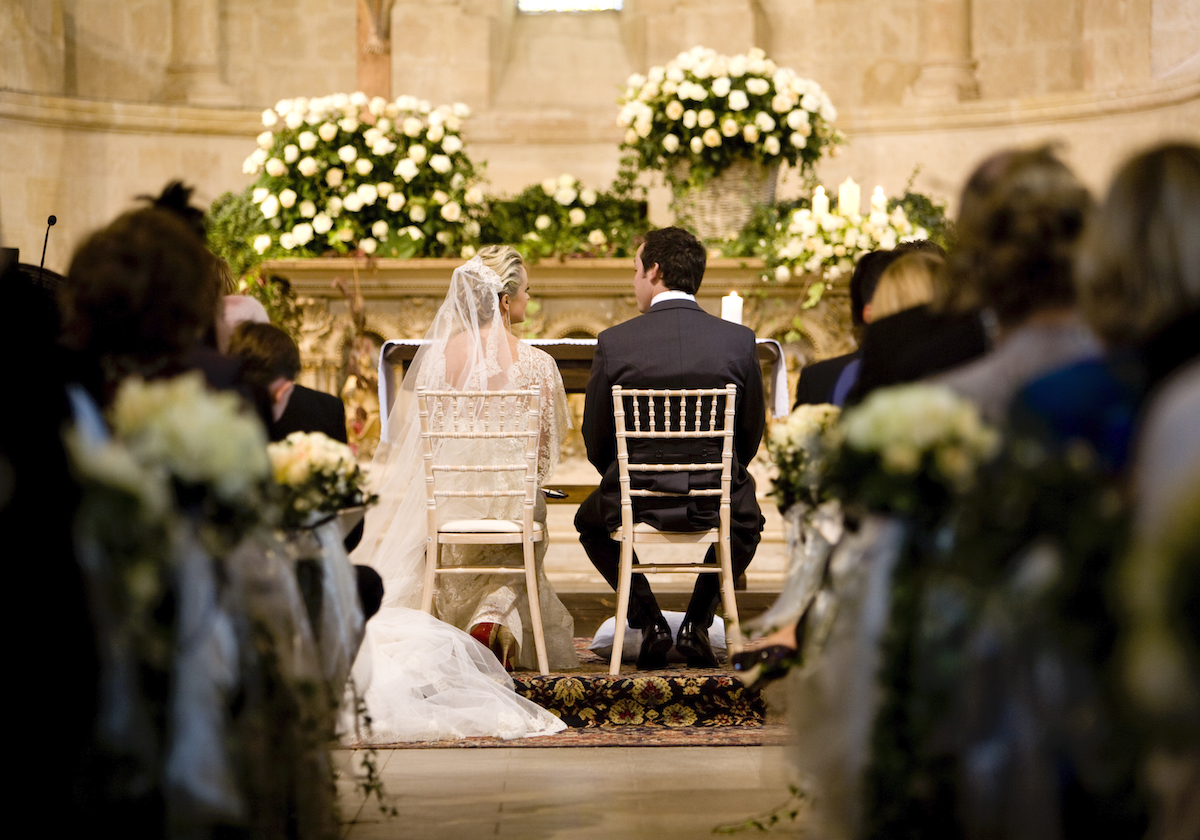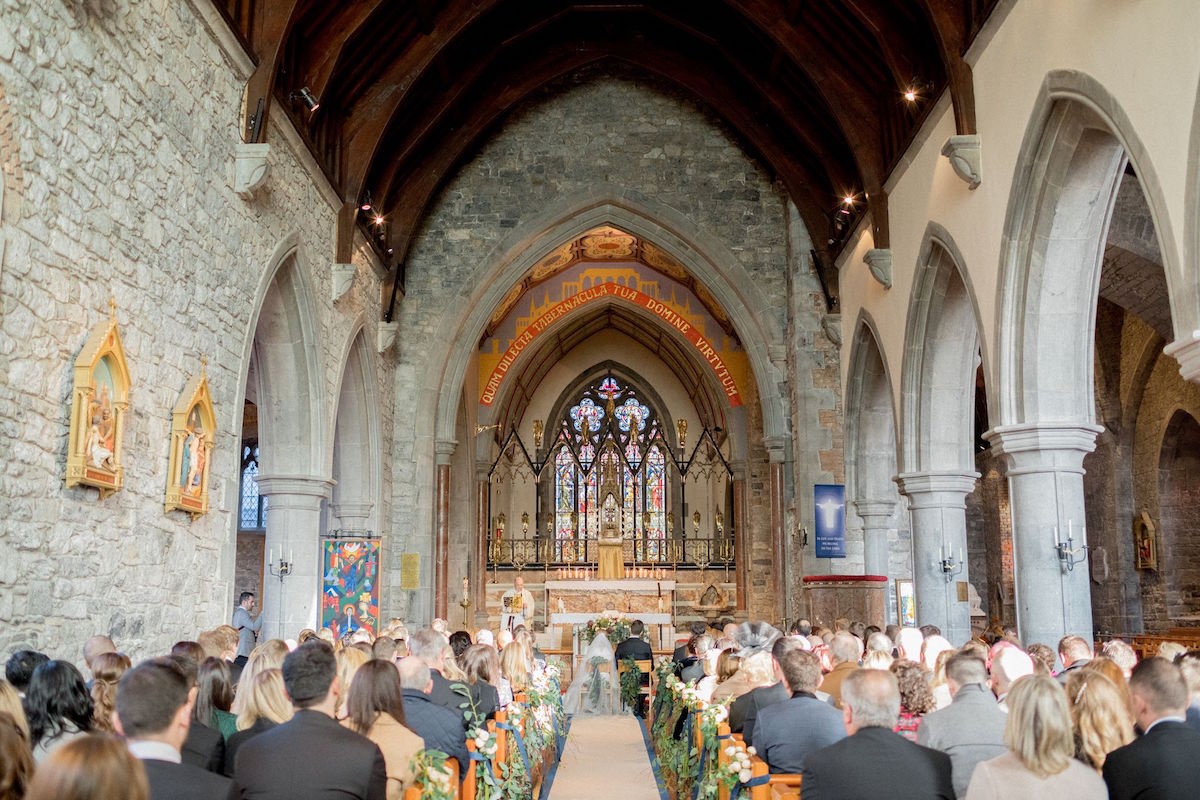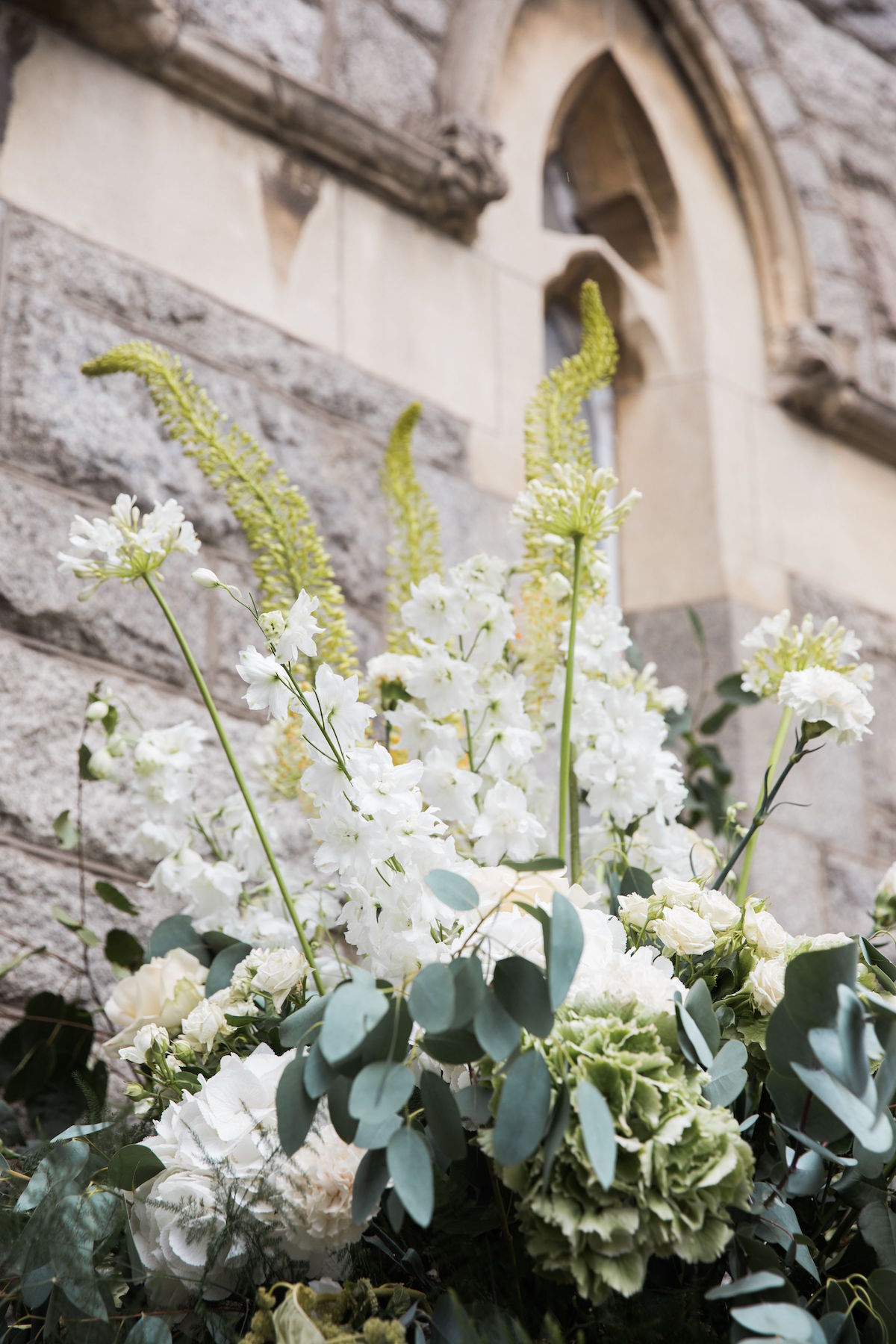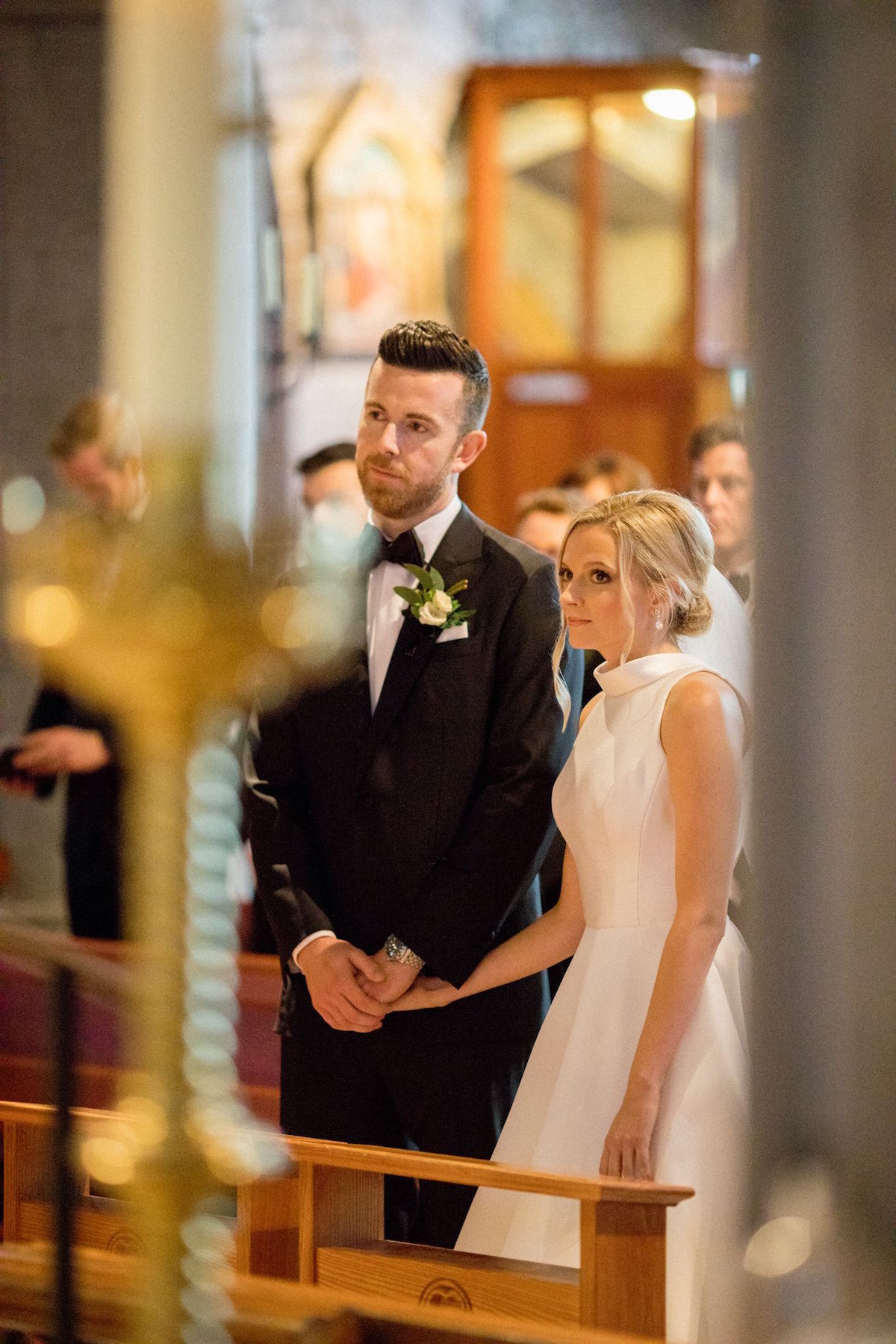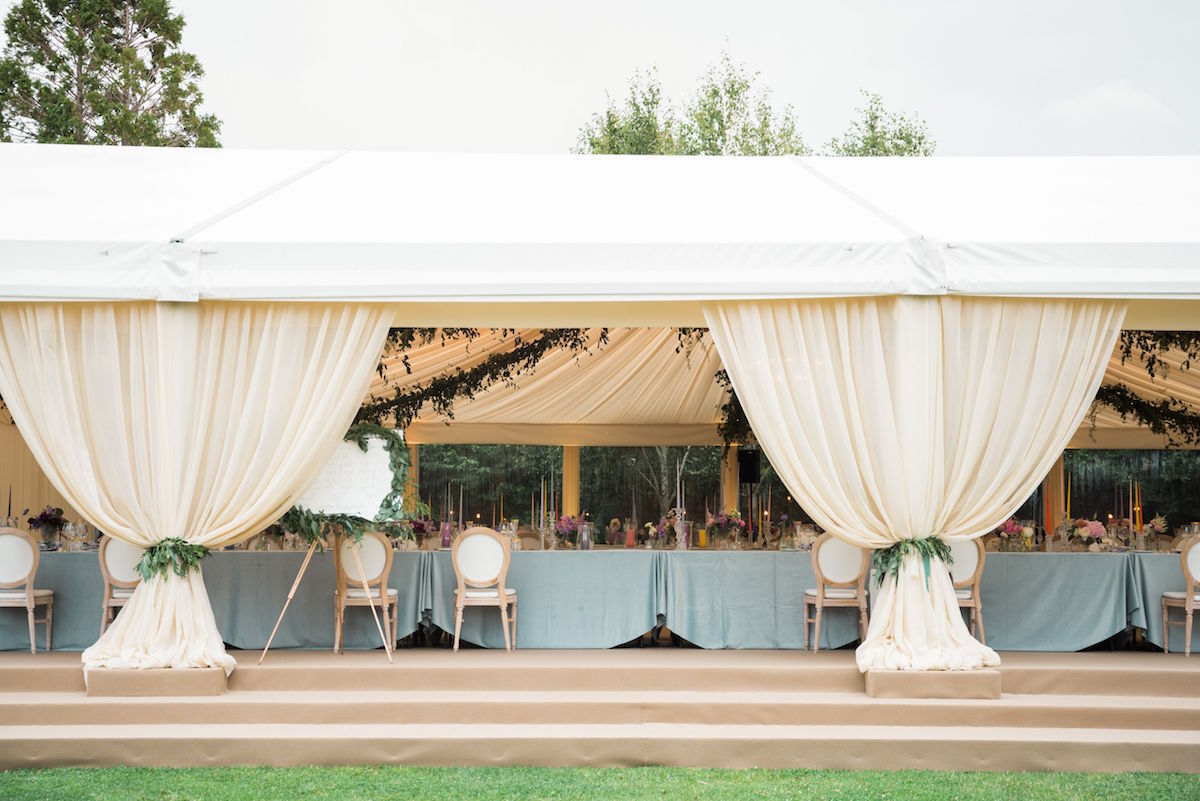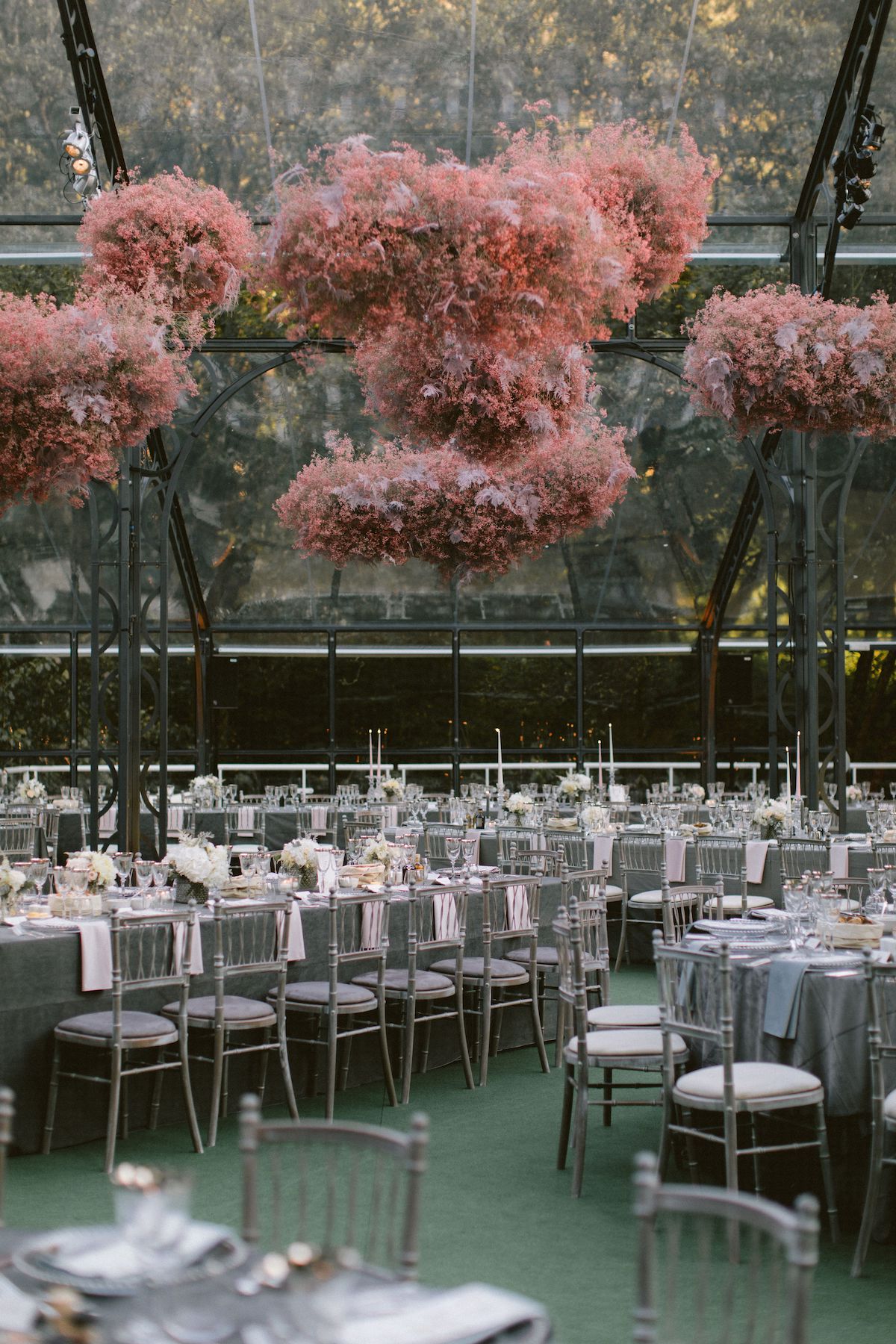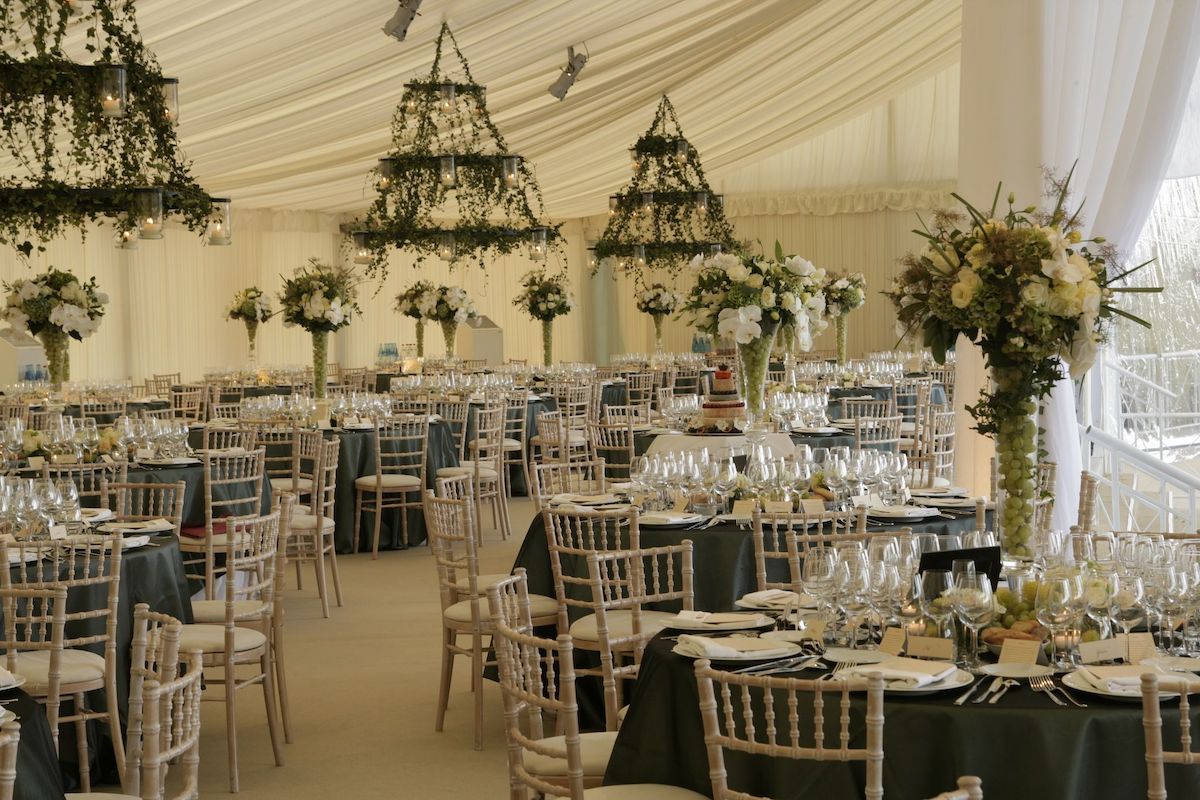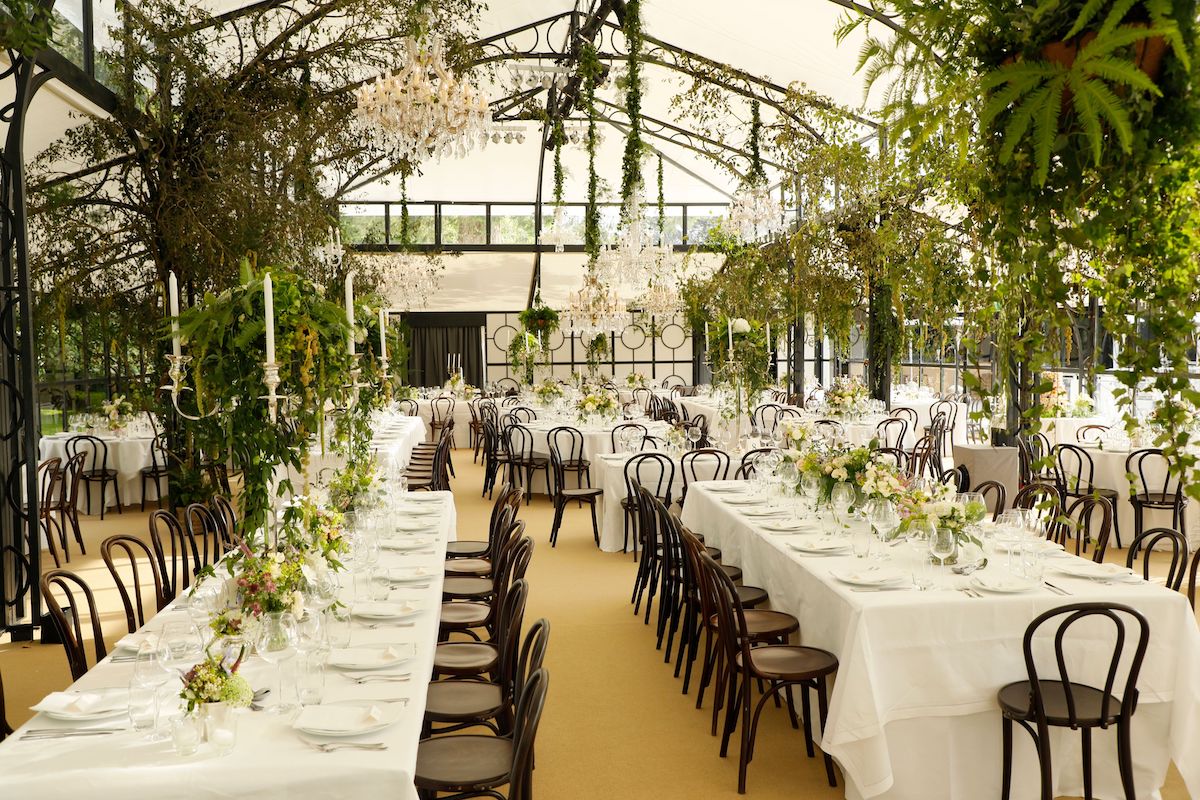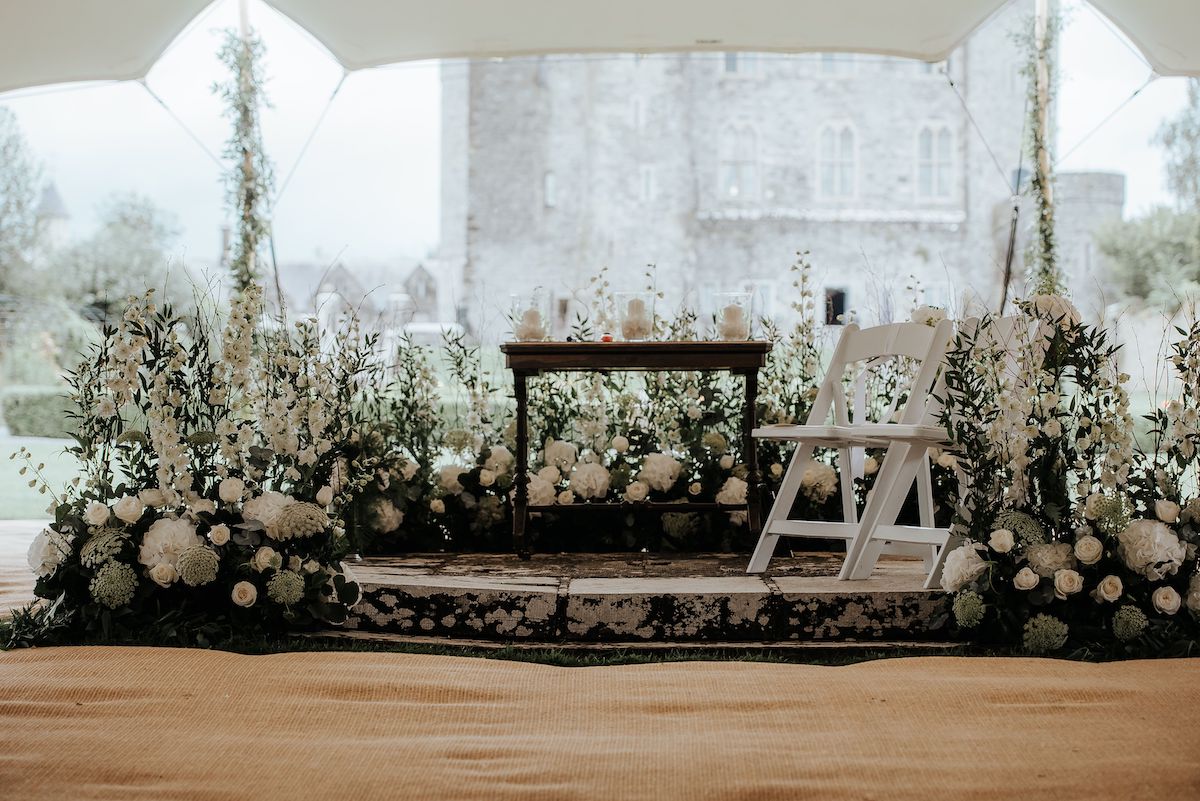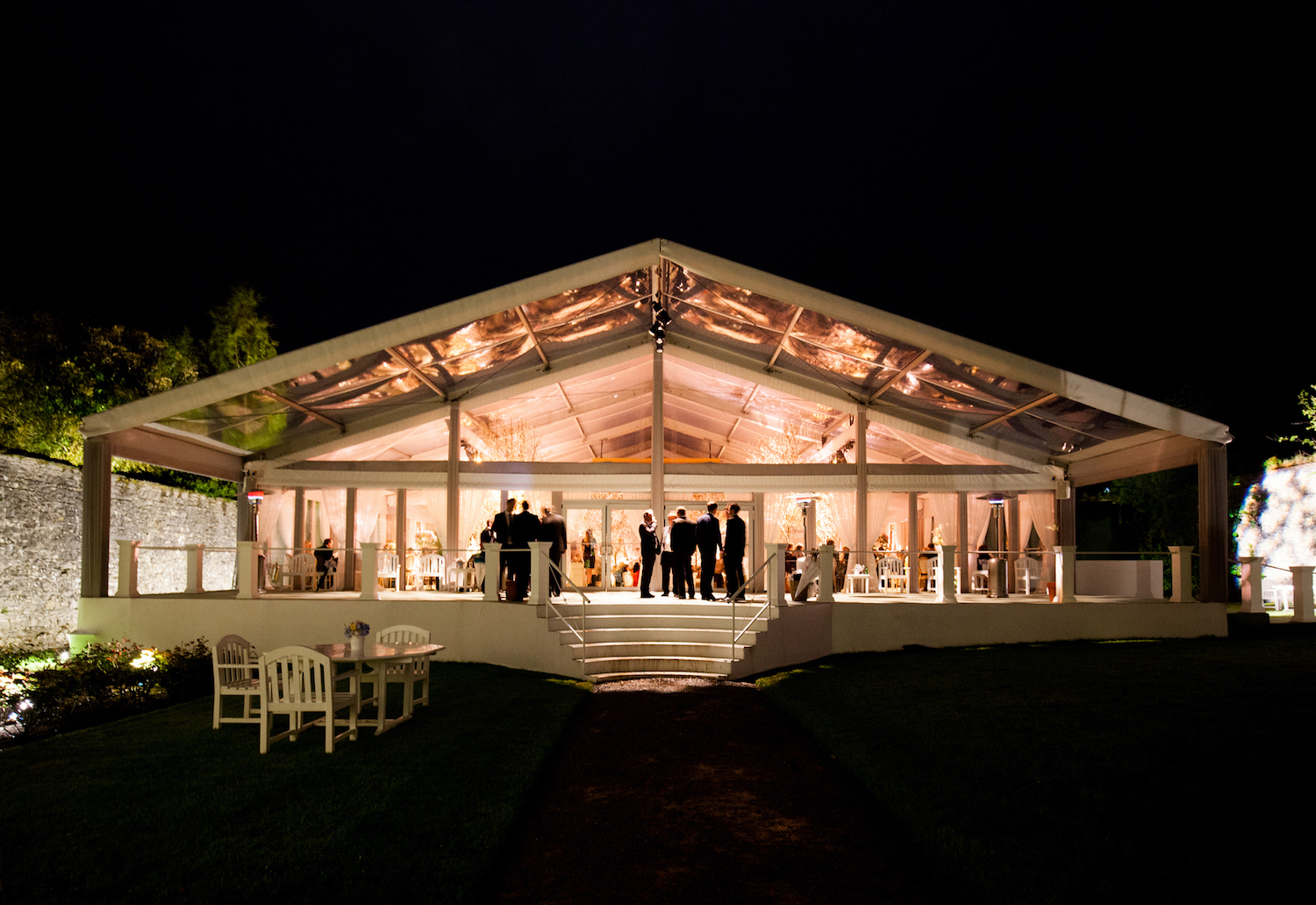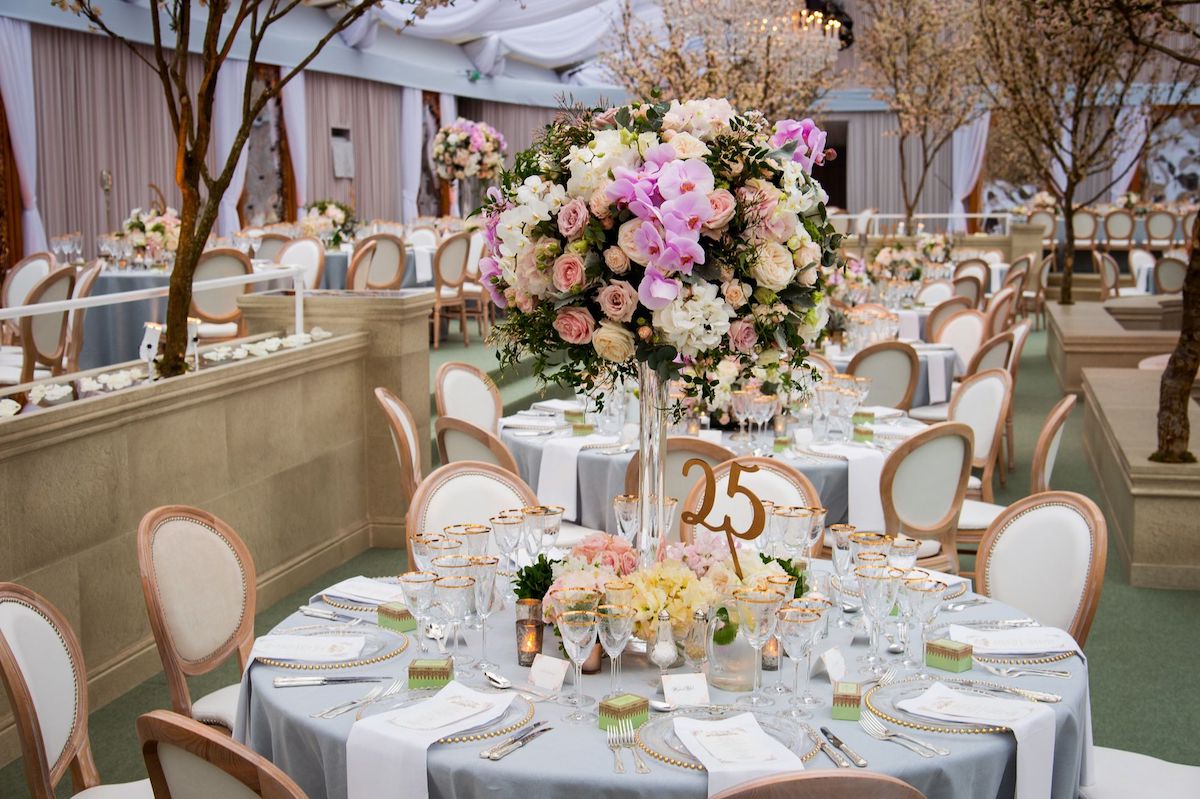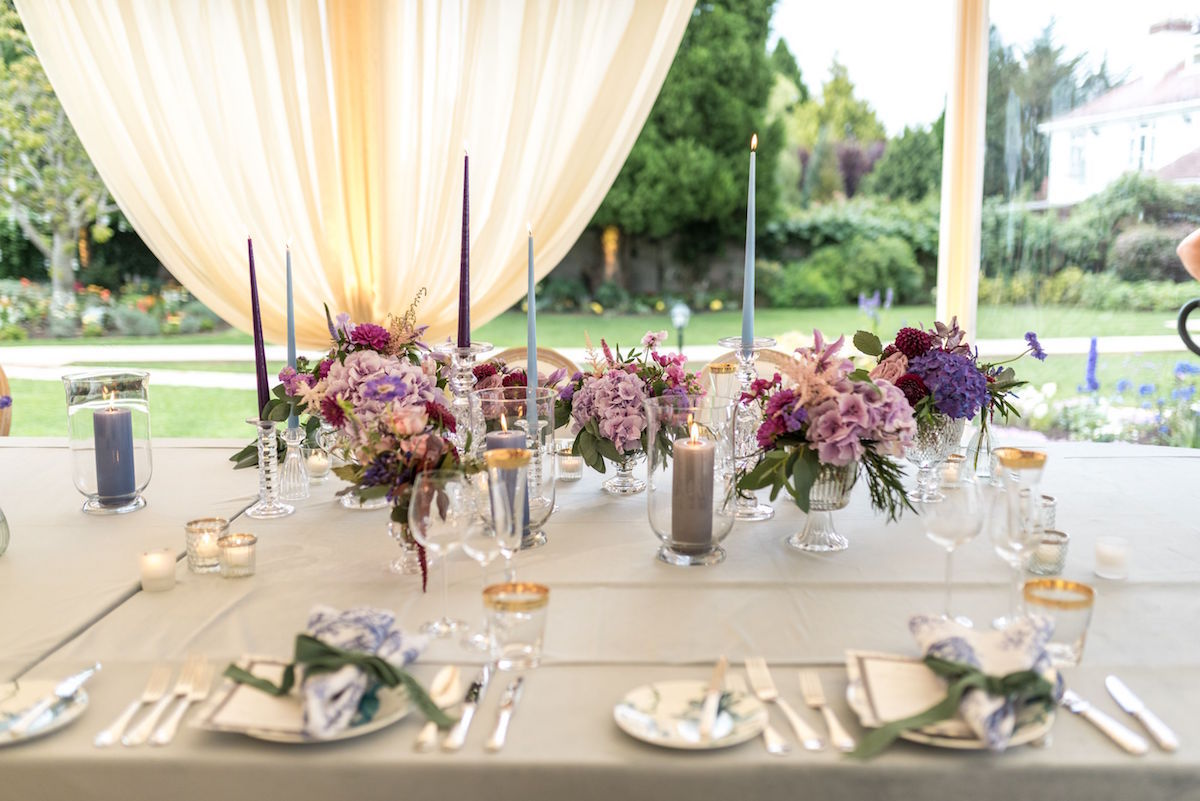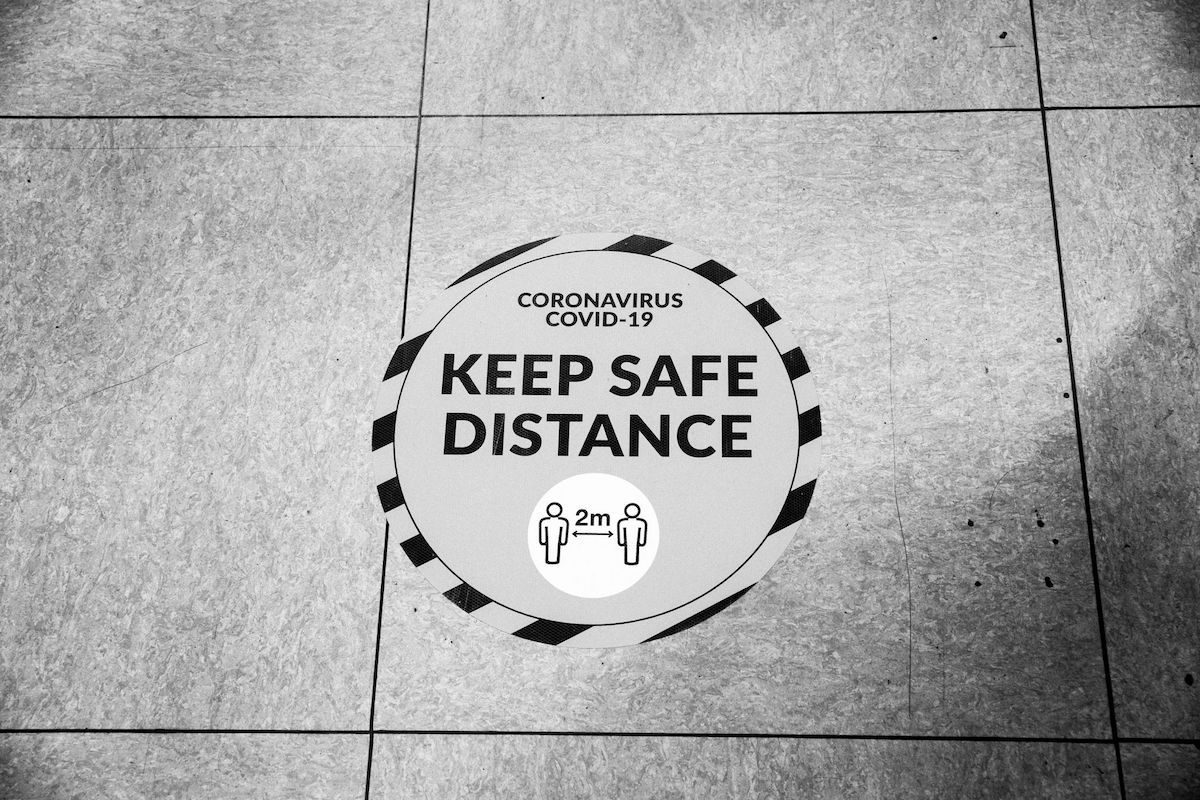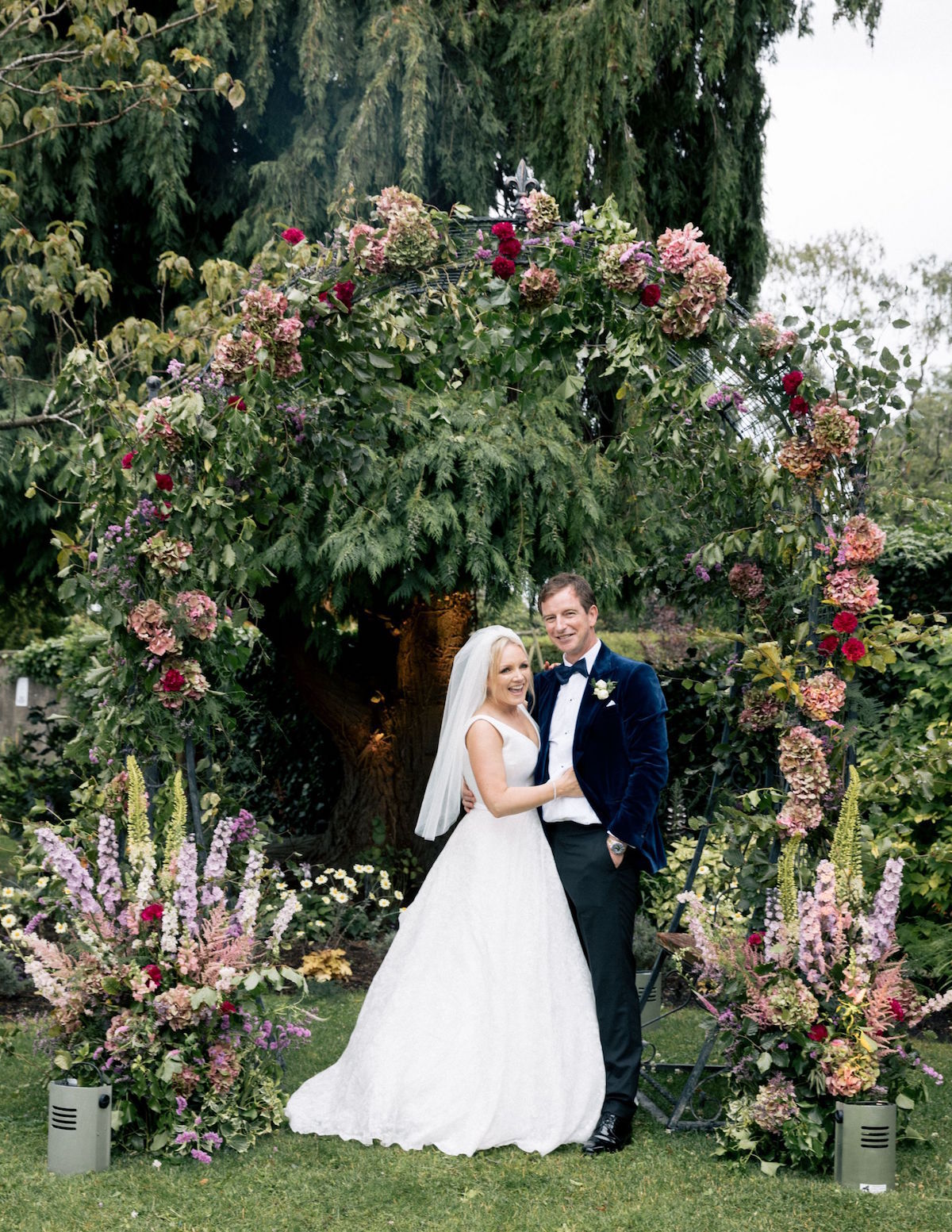Many couples planning a wedding in Ireland have their hearts set on a traditional church wedding. Whether it’s in a quaint country parish, a grand cathedral, or even a chapel on the grounds of your Irish wedding venue, there’s something unique about exchanging vows in a church wedding venue. One reason is that churches are often very beautiful architecturally, with features like high ceilings and stained glass windows. You’ll want to make sure that you dress up a church wedding venue in a way that highlights those features instead of overwhelming them.
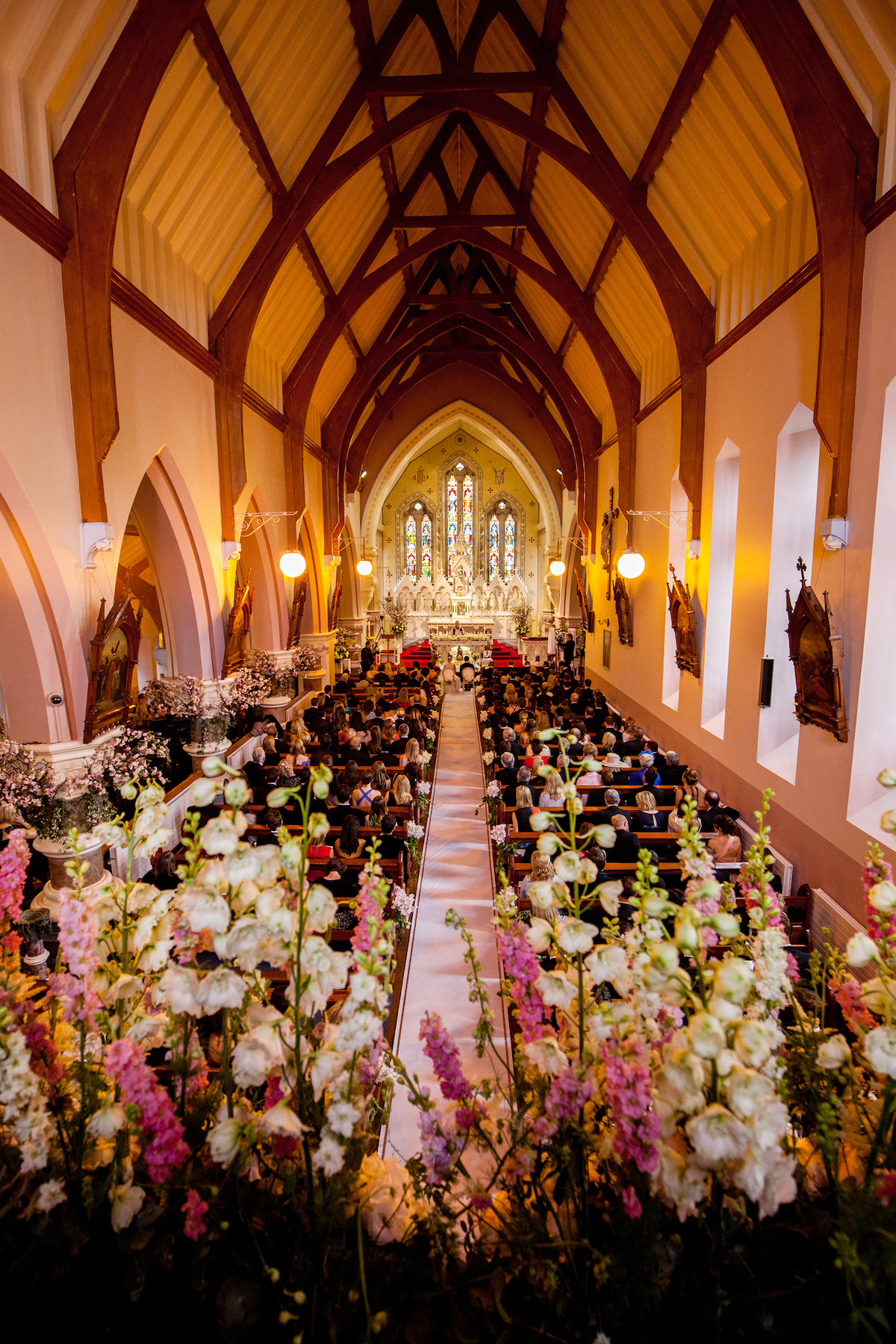
One key question I often hear is: does the Catholic church in Ireland allow wedding decorations? The answer is yes, but the rules depend on the parish. While there are some aspects to having a Catholic wedding in Ireland that are the same across the country (such as the paperwork required), other elements like music and décor are left up to local priests to decide. Some will ask you to follow specific guidelines for how you dress up a church venue. The most important thing is to talk to the parish priest and find out what they will allow. In fact, this is true for other churches too, although the Catholic church can be a little more conservative. But that doesn’t mean you can’t dress up a church wedding venue and add your own flair. I’ve designed many beautiful church weddings over the years! So here are some of the best ways to dress up a church wedding venue and make it extra special.
Make an entrance. One of the most effective ways to decorate for a church wedding is to create a big impression at the entrance. A lush, ornate floral arch is always stunning, especially the way it contrasts the ancient architecture of a historic church entrance. (It’s no wonder this is something you often see at royal weddings!) Plus, because it’s on the outside of the church building, there’s often a little bit more flexibility to be extravagant with your blooms. Of course, an arch isn’t your only option. You can also place beautiful arrangements on either side of the door, or style additional elements like lanterns, candles, or wreaths. If your church has stairs up to the door, place decorations on each step to line the walkway.
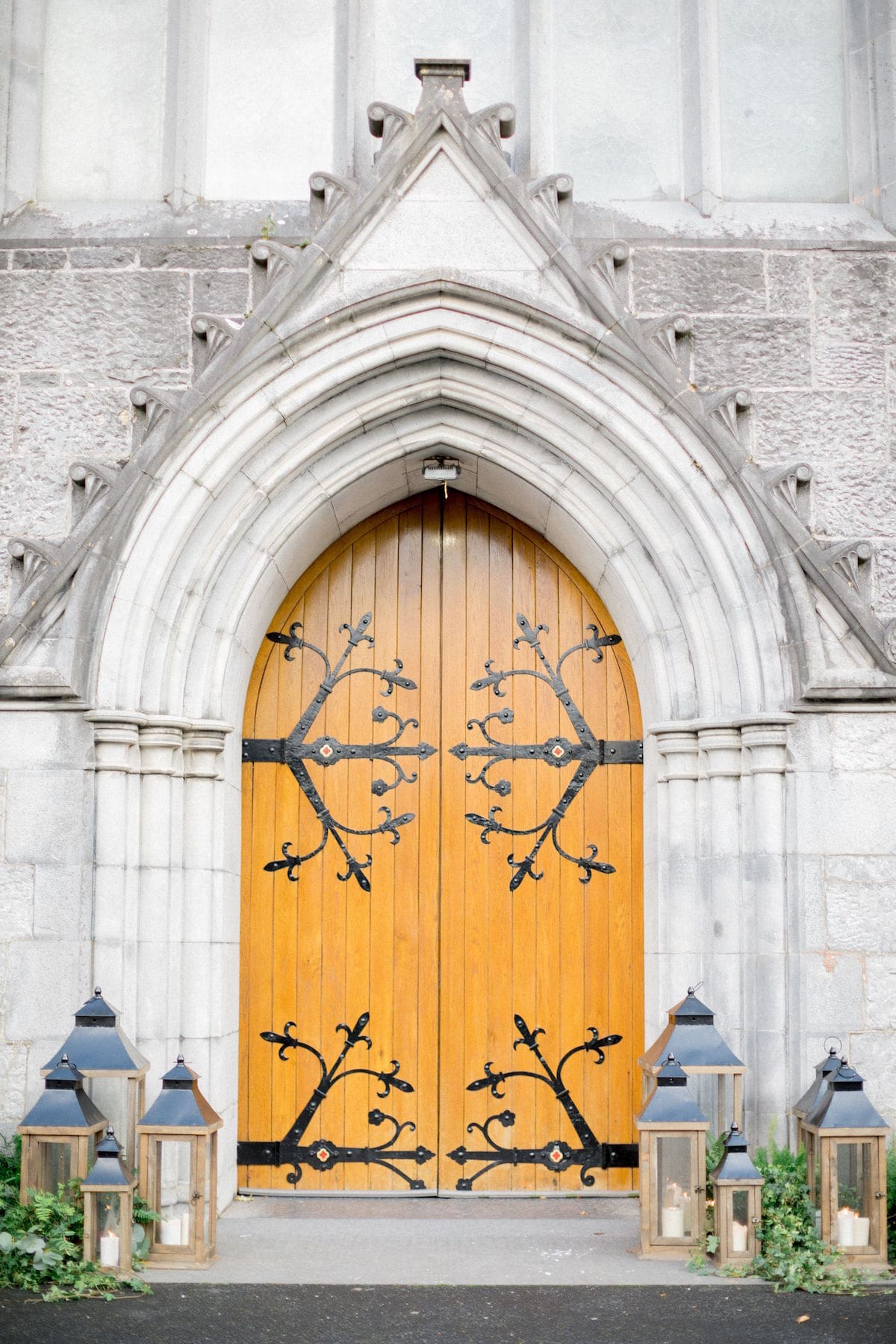
Line the aisle with greenery. One reason why greenery works well in a church setting is that it’s often more subtle than flowers and also goes well with the existing décor. You can keep it simple, wrapping railings or pillars with foliage or having swags of greenery going down the aisle. Or, if the church allows, you could bring the outside in with potted plants or small trees lining the aisle. Bundles of eucalyptus also always look lovely at the end of each pew.
Use candles in creative ways. Candles and churches are a natural match. There’s something particularly romantic and peaceful about candles lighting a beautiful old church! You can place just a few candles or candelabras around the church, or place dozens of candles on the altar steps for a stunning, light-filled display. Candles are also great for lining the aisle. You don’t have to place them all along the aisle, just in small clusters with a floral arrangement at strategic spots. Hanging candles can also be beautiful if the design of the church and their regulations allow.
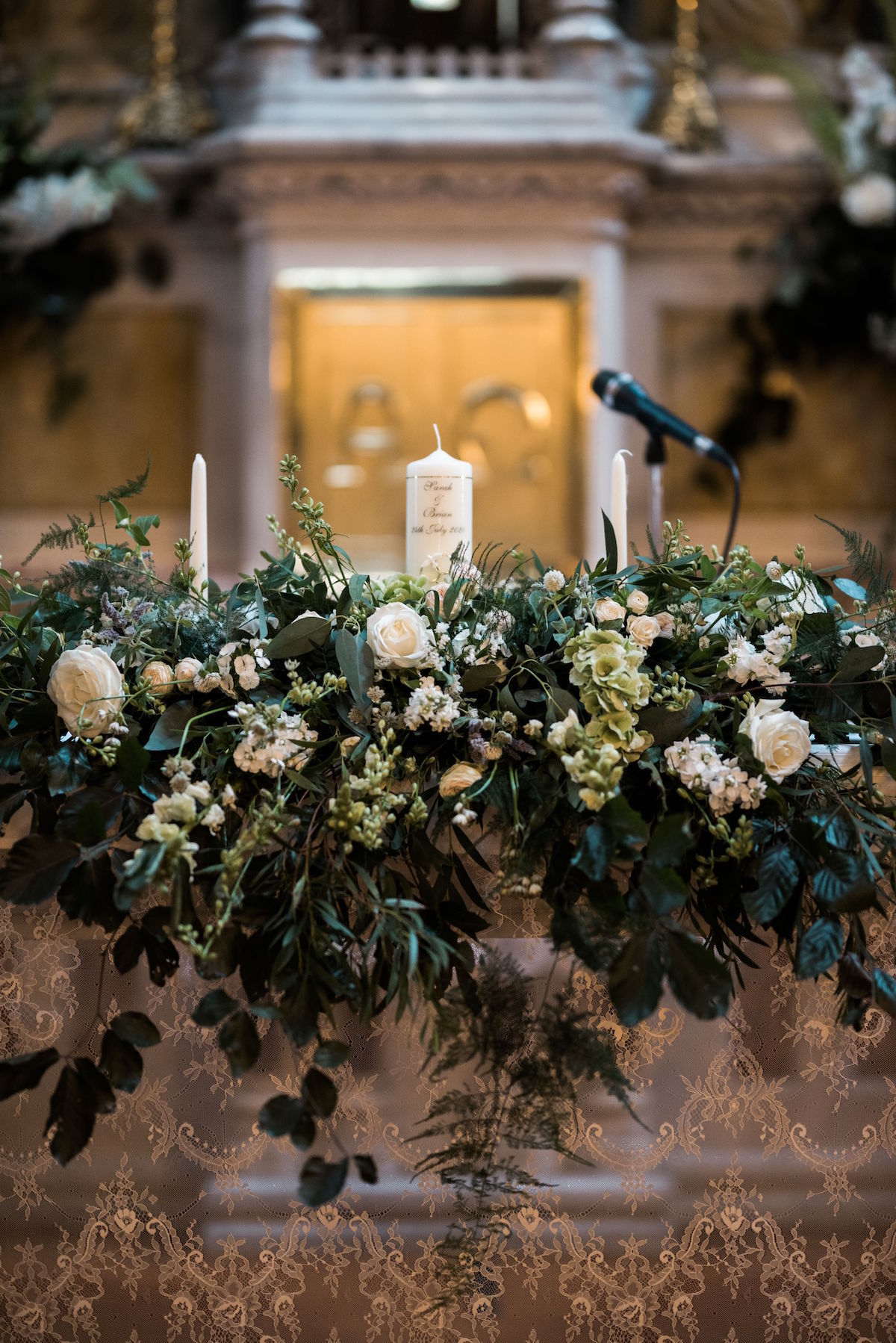
Focus on statement arrangements. If you’re limited with how much décor you can bring in, it’s a good idea to work with your florist and have them focus on 2-3 key arrangements. Place these strategically so that have maximum effect, and use unusual areas like a balcony as a floral focal point.
Keep pew decorations natural. We’ve all seen pictures of weddings from the ‘80s or ‘90s with big gauze bows or other decorations tied to each pew. While this is one way to add décor to your church, it can end up looking a little dated. Natural embellishments like greenery, small posies of flowers, or even simple arrangements of grasses or dried flowers can add a lovely touch, while still being classic and timeless.
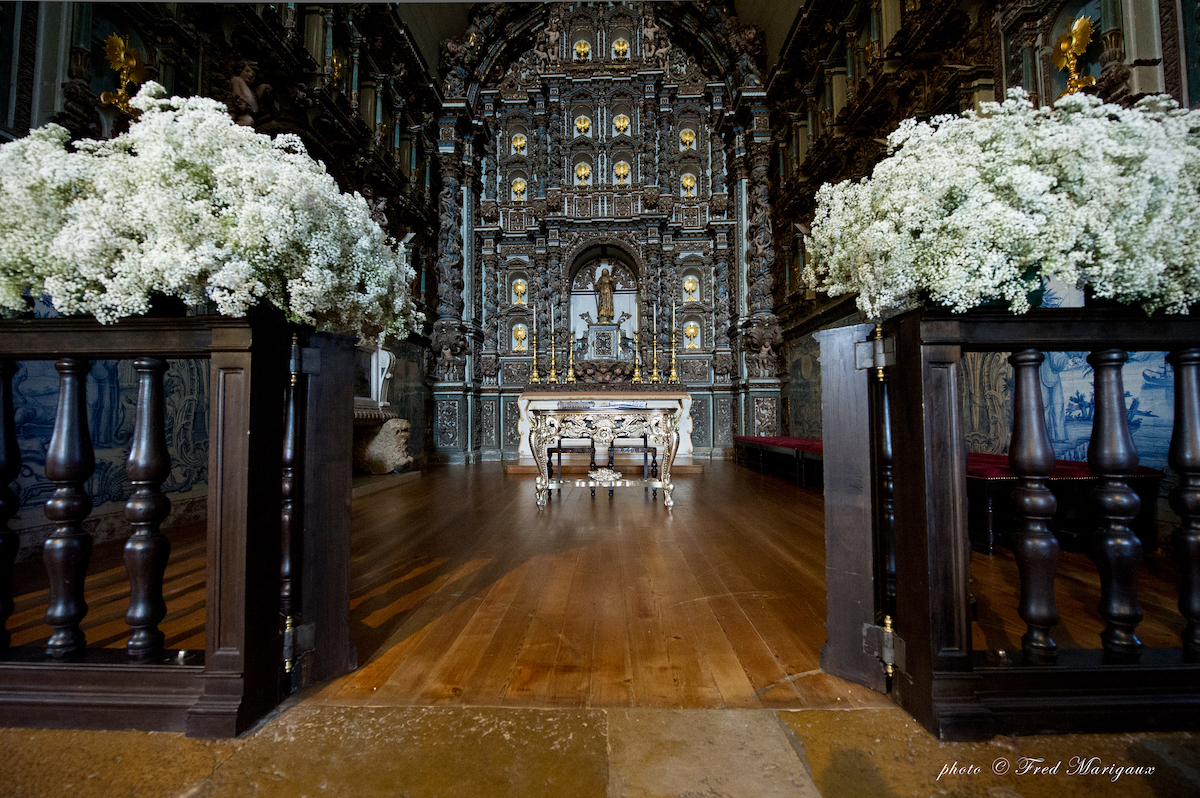
Ultimately, the best way to dress up a church wedding venue is to work with a great florist and wedding planner, and use the church itself as your inspiration!
Slán go Fóill,
Tara
Images by John Ryan Photography, David Willems, Christina Brosnan, Doreen Kilfeather, DK Photography, Fred Marigaux





